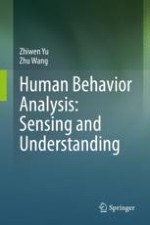
2020 | OriginalPaper | Buchkapitel
1. Introduction
verfasst von : Zhiwen Yu, Zhu Wang
Erschienen in: Human Behavior Analysis: Sensing and Understanding
Verlag: Springer Singapore
Aktivieren Sie unsere intelligente Suche, um passende Fachinhalte oder Patente zu finden.
Wählen Sie Textabschnitte aus um mit Künstlicher Intelligenz passenden Patente zu finden. powered by
Markieren Sie Textabschnitte, um KI-gestützt weitere passende Inhalte zu finden. powered by